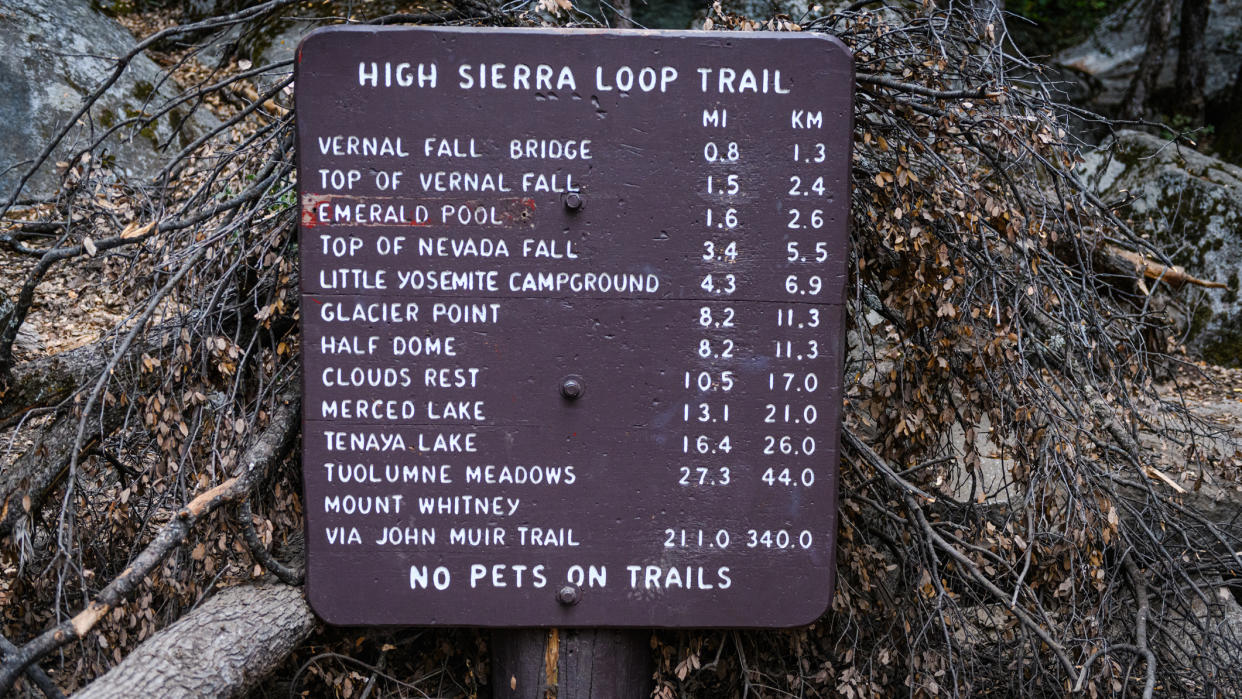What is a trailhead? We take at look at where it all begins

What is a trailhead? No, it's not a clever clog who knows literally everything about every trail in the world. Neither is it the blissful state of being completely at one and in sync with the backcountry. "Dude, I've totally got trailhead." No, it's neither of those. So, what is a trailhead?
If you are keen to get into hiking, there’s a plethora of helpful printed and online data these days to help you discover exciting new routes. You can find out almost everything from the comfort of your own home, from how long the hike will be, to whether you need hiking boots to cross boggy areas or if you can get away with hiking shoes and of course navigational details like the location of the trailhead.
But, if you’re brand new to hiking, you might be asking a very common question that’s not usually explained: what is a trailhead, exactly? Is it at the beginning, the end, or some unspecified point in between?
In this article, we explain this ubiquitous hiking route term to help you glean the best information from all of this data and know what to expect when you arrive for your hike.
Meet the expert
Is a trailhead the beginning of a trail?

Yes, a trailhead refers to the beginning of a trail used for hiking, biking or horseback riding. If the hike that you’re planning is a circuit, also known as a loop, then the trailhead will also be the end point. However, for a hike where you return the same way you came, known as an out-and-back trail, the end point will be another destination, such as the summit of a mountain or a lake. In either case, the hike distance should always refer to the total distance from when you leave the trailhead to when you return to it.
Often, multiple trails begin from the same trailhead and sometimes, you will be instructed to begin on one trail and then pick up another trail from a point further down the line where the two trails intersect – this is known as a trail junction.
What can the trailhead tell you about the hike?

When you’re looking at details of a hike in a guidebook or online using a route finder app like Komoot, there are really two main pieces of information you want to pay attention to. The first is the obvious one and that’s the trailhead location. This information may be very specific, giving you geographical markers by which to find the trail, but when using route finding apps you might only see map coordinates – you can enter these into the maps app on your phone or GPS to get driving directions to the trailhead.
The second piece of information that’s good to know is the elevation of the trailhead. If you're climbing a mountain, you’ll be able to subtract the elevation of the trailhead from the elevation of the summit to know how much elevation you’re going to gain overall, then divide this number again by the distance of your hike to get an idea of how strenuous it will be.
Every hike is different, and some have one hard, steep section while the rest is quite mellow, but generally if you see a hike where you’re gaining 1,000ft per mile or more, you can expect it to be fairly challenging. You might also cover a lot of elevation in a single hike but it could be spread out over many miles, meaning you’re only gaining 500ft per mile or less, and while it may not be an easy hike, it won’t actually be particularly steep. For more detailed information, look for a route profile, which will show you how much elevation gain to expect in each mile of the hike so you’ll be prepared for any steep sections. Now, back to trailheads…
What to expect at a trailhead

The amenities at a trailhead vary wildly depending on where you are and you should never rely on them having services or information unless it is spelled out somewhere that they exist. That said, in the US, formally designated trailheads are more common – and extremely consistent in National Parks and State Parks. You can usually expect some parking spaces as well as an information board with a map and possibly other information about the trail or the area. Some trailheads even have bathrooms, camping spots and picnic tables.
In the UK, trailheads may have all of the above, but frequently they offer nothing more than a simple wooden sign with the name of the trail or the destination and the distance to get there. There are many trails in the UK that don’t even have a trailhead, so you might have to use the coordinates to get to the general area and look around for a path and other people carrying trekking poles and looking purposeful.
Next, read our article on hiking trail signs and how to use them to help you stay safe, navigate and share the trail.
